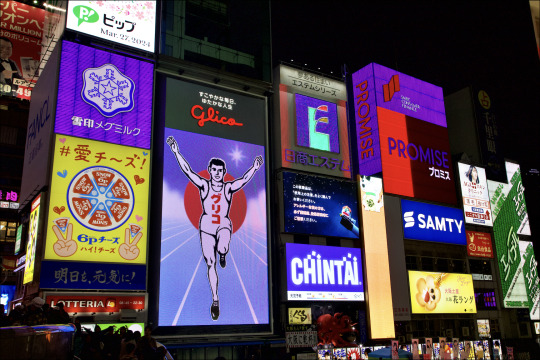#glico running man
Text

The Glico running man
Osaka, Japan
#osaka#japan#glico running man#dotonbori#night#evening#kodak ultramax 400#japanese#film#analog#filmisnotdead#ishootfilm#35mm#nikon fm3a
136 notes
·
View notes
Text




Dotonbori night views
#my posts#my photos#Japan#Osaka#my photography#dotonbori#glico running man#japan photos#japan travel#city photography#street photography#Nanba#Namba#dotombori#大阪#道頓堀#難波#なんば#日本#josie.txt
14 notes
·
View notes
Text
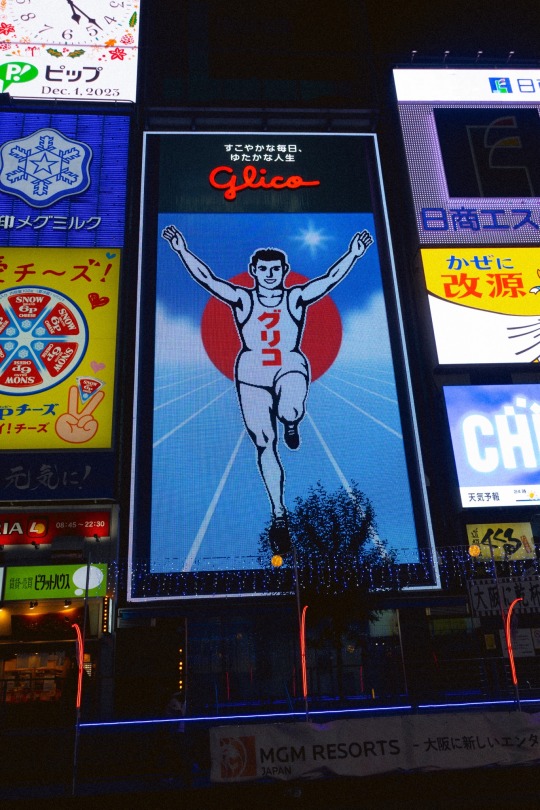
Dotonbori. Chuo Ward. Osaka, Japan.
#Dotonbori#Chou Ward#Osaka#Japan#Photography#Neon Sign#Neon Aesthetic#Neon Lights#Glico Running Man#Glico
4 notes
·
View notes
Text

I still have a bunch of photos of my Japan trip in my drafts. I don't really feel like posting them anymore, but not posting them would be a waste of the effort I already put into it. So, I might post one or two pictures every now and then until I worked through them all.
3 notes
·
View notes
Text
i did start playing yakuza because i was soo excited about going to japan i wanted to do some virtual tourism first and i was trying to not replay p5r again but unfortunately that did mean when i saw the kabukicho sign i was like wow just like in my video game!! and presumably the same thing will happen tomorrow when im in dotonbori
10 notes
·
View notes
Text
Tag 17 - Osaka unsicher machen mit Yuki
Heute standen wir wie immer nicht ganz so spät auf, um uns mit Yuki in Osaka zu treffen. Auf dem Weg zum Treffpunkt liefen wir an einem beeindruckenden Tempel vorbei, wo ein riesiger Löwenkopf über dem Eingang hin.

Von dort aus liefern wir zum Treffpunkt und schlenderten über die grosse einkaufsstrasse von Osaka. Dotobori.
Eines der wahrzeichen am Eingang dieser strasse ist eine riesige Krabbe und der Glico Running man.


Nach nach etwa einer halben Stunde durch diese riesige einkaufspassage kamen wir schliesslich an dem kaufhaus an, dass das Pokémon Zentrum beherbergte.

Jan und ich interessierten uns jedoch ein wenig mehr für die anwesenden Sanitäranlagen.
In dem kaufhaus fanden wir wahrscheinlich die saubersten Toiletten vor, die jemals in einem kaufhaus gewesen sein können.
Anschliessend gingen wir noch in den Keller des Gebäudes um einen kleinen Snack zu uns zu nehmen und ein süsswaren Souvenir zu erwerben.
Anschliessend liefen Jan und ich zu einem Kamera Geschäft, wo ich Dia-Filme kaufen wollte. Glücklicherweise sind diese Filme hier in Japan, keine Seltenheit und waren einfach zu bekommen. Die Preise jedoch waren wie in Deutschland. Mit zwei nagelneuen Fuji Provia 100 im Sack trafen wir uns wieder mit den anderen.
Nachdem alle Analogfilm-, Süsswaren-Souvenir und Pokémon Bedürfnisse erfüllt waren, fuhren wir mit der Bahn zum Osaka Castle. Dort angekommen zwangen uns unsere hungrigen Mägen zum Kauf von Bentos aus dem Family Markt.
Im Park angekommen machten wir uns direkt über unsere Vorräte her mit einem hervorragenden Blick auf das Schloss Jan erspähte nämlich ein prima Platz, an dem wir unsere Beine herunter baumeln lassen konnten, um über den Wassergraben des Schlosses zu blicken, während wir unser Essen genossen.
Der Park war überwältigend. Es waren überall wahnsinnig viele blühende, kirschbäume und unheimlich. Viele Menschen sassen, darunter oder flanierten über den Gehweg.
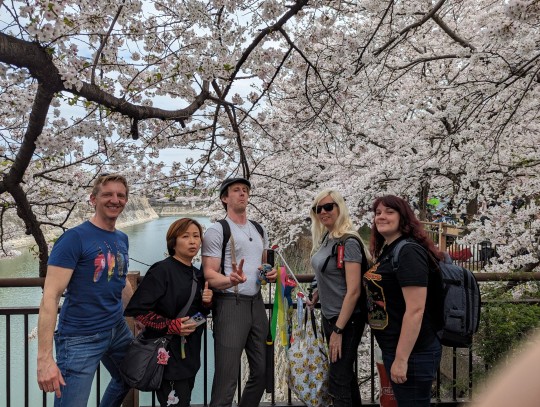
Jan und ich liessen es uns nicht nehmen, unsere selfie raider-aktion weiter durchzuführen. Dabei haben wir immer Leute gesucht, die vergebens versuchten von sich selbst ein selfie zu machen. Dann haben wir ihn Angeboten, das Foto für Sie zu schiessen. Nur um zu guter Letzt dann doch ein selfie von uns selbst zu machen. Das führte zu allerhand Gelächter und hat sehr grossen Spass gemacht.
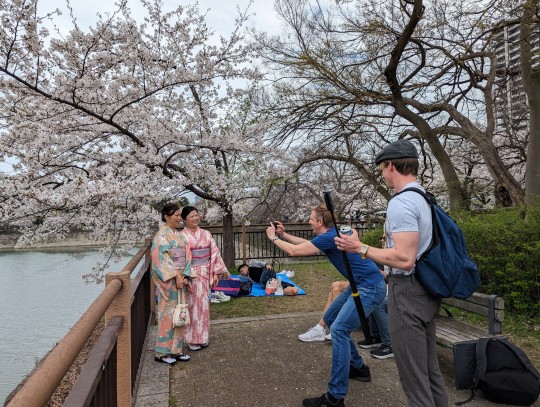
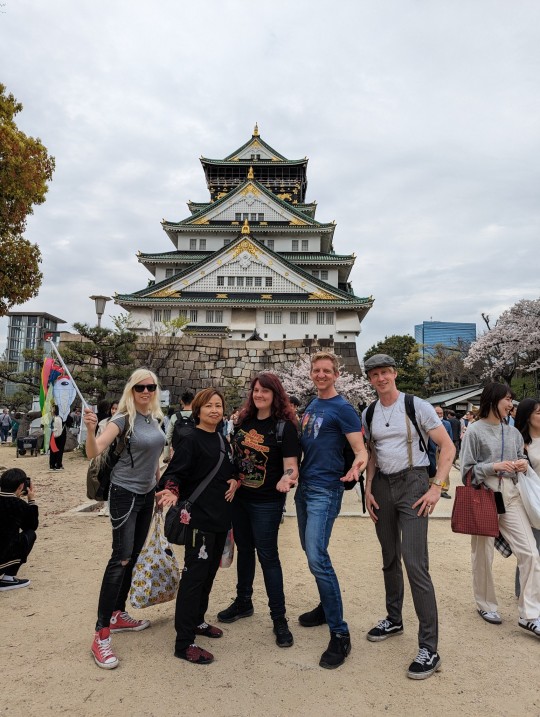
Interessanterweise lernten wir recht viele Vietnamesen im Park kennen. Auch zwei Mexikaner waren dabei. Japaner waren seltsamerweise irgendwie eine Seltenheit. Am Ende des spaziergangs setzen wir uns noch auf eine hohe Mauer, um im Anschluss zu Yukis Wohnung zu fahren.

Yuuki wohnt sehr schön. Es ist ein sehr grosser moderner wohnblock, der gerade neu renoviert wird. Sie wohnte im 13. Stockwerk, von wo aus man einen sehr schönen Blick auf die lange einkaufsstrasse hatte, die bei ihr direkt vor der Tür mündet. Diese einkaufsstrasse ist laut ihrer Aussage sehr sehr alt.
Ihre Wohnung ist zwar klein, jedoch sehr ordentlich und sehr sauber. Sie zeigte uns einige ihrer beeindruckenden scherenschnitt arbeiten. Wir übergaben ihr gastgeschenk und gingen danach noch zusammen an einer Bahnstation zu Abendessen. Es war ein Fischlokal. Als der Abschied dann kommen musste, war yuuki, sehr traurig und wir vollführten ein herzzerreissende Verabschiedung mit langen Umarmungen und langem hinterher winken. Ich denke, dass die umliegenden Passanten gedacht haben. "Ah Wenn ich nur auch so einen Freund hätte", es war eine schöne Zeit und wir sind yuuki sehr dankbar dafür, dass sie sich so viel Zeit für uns genommen hat. Wir hoffen, dass wir Sie bald wiedersehen.
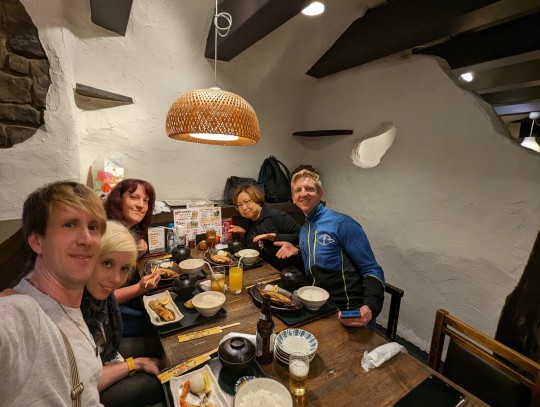

2 notes
·
View notes
Note
Hey Matsuda lover anon once again. Im so sorry for getting annoying about matsuda-yoosung dynamic in your asks all the time. I just love love your takes on the two men's dynamic.
I just saw in the tags about Matsuda and Yoosung sharing local snacks from each other's countries (Japan and Korea respectively) i just got this thought in my head
So there are certain snacks which are very popular in both the countries respectively but are known by different names and sometimes produced by different brands like Japan has Pocky sticks from the Glico company and Korea has Pepero sticks from the Lotte company.
Another snack both the countries share is...Fish Shaped Cakes. In Japan they are known as Taiyaki and in Korea they are called Bungeoppang. And I just thought of a moment between the two men related to fish shaped cakes around the time they had just began to learn each others languages and are yet to be fluent and occasionally spoke english
I imagined that on one fine day while the two men were walking around the town, talking to each other, yoosung notices a guy selling fish shaped cakes on his cart and exclaims "Oh Bungeoppang! I missed them!" and runs towards the cart. An initially confused Matsuda goes "wait what!" and notices his younger friend near the taiyaki cart and quickly walks towards it. Meanwhile yoosung was struggling to explain the taiyaki guy that he wants two taiyakis cuz the latter couldnt understand him. Matsuda who was standing right behind Yoosung calmly explains the seller to give them two taiyakis.
An embarassed yoosung takes out his wallet to pay the guy to which matsuda responds by gently pushing the younger man's hands as yoosung was trying to take out a few currency notes. Matsuda nods his head and winks at him, gesturing the younger man that he will pay for the taiyakis.
The two men are now sitting near a lake enjoying their taiyakis and talking in between.
"Matsuda hyung you never let me pay for anything!"
"When I go to your place, you will pay for stuff okay"
"When will you come to my place"
"When I get time, my days have been very busy"
"I hope you come soon, you will really like it. I will introduce you to the rest of my friends"
"Okay"
"In the next party I will send you an invitation, please dont decline this time"
"Thank you and sure"
".....so you guys call taiyaki bungeoppang huh?"
AHHH Matsuda being invited to RFA parties from then on is something that hasn't crossed my mind, but you are SO right on that! It's a wonderful opportunity to network, practice your spoken Korean, and do some charity work.
That said, I can't blame Yoosung for being a bit clumsy when it comes to food you thought you knew so well. I know I would react the same way. There is something exciting about seeing familiar treats in a different country! I bet this would encourage a long discussion on all the different snacks and foods between them. They definitely make a small bucket list each on what foods they would like to try. Yoosung is a huge food lover, so that's definitely up his alley, while Matsuda just enjoys trying out new things, especially with good company. Food trips are such a fun activity to plan!
And that little exchange between them that you wrote out? I love it so much. Yoosung calling Matsuda 'hyung', and Matsuda playfully reassuring him on not bothering with payment while he's the one visiting... it's the kind of laid-back friendship that makes me smile. They are buddies your honor!
#mia talks#anon#also please don't apologize!#like i already stated - i love when folks share their love for their fav characters#and it is so much fun to put your two favs from different media together#i never thought of putting matsuda and yoosung together but wow! they really would become good buddies! neato#another fun idea is yoosung helping out matsuda with getting a pet if that's what he wants#idk i just like to thing of post good ending yoosung being a huge animal nerd bc of his career#he keeps in on a down low until he sees a dog walking by#ALSO HOORAY TUMBLR ALLOWS EDITING ASKS AGAIN#was very evil of them to remove that quite frankly
2 notes
·
View notes
Text
A3! Translation - Regional Tour Instablam Posts (Autumn Troupe)
Autumn was a little easier to do than Winter was... you’ll probably see why pretty quickly lol
Also, the like count on the posts seem to be completely random. This isn’t important to the meanings of the posts, but I think it’s really funny that I’ve gotten Kazu posts with 0 likes lol
Also you can see here that I tried to vary the way they type out their tags in terms of capitalization and stuff! That’s a purely stylistic choice on my part; there’s not much in the Japanese that implies for it to go either way
Sendai - Zunda shake

Banri
Sendai. A commemorative zunda.
#the fabled zunda
#delicious
Juza
Delicious.
Taichi
Sendai was fun! (≧▽≦)
We all
drank zunda ^^
#MANKAI Company
#Sendai
#We’ll come again
#Zunda
#Wasnt sure what station lunch to get (1)
Omi
Thanks for coming to our Sendai play run.
This is sweet and delicious.
#Sendai
Sakyo
Thank you for attending our Sendai play run.
Apparently this is famous.
Azami
#Sendai
#Thanks
#Zunda
--
Nagoya - Nagoya morning breakfast set
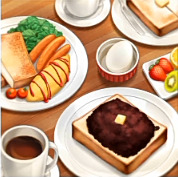
Banri
Nagoya morning.
#coffee
#as for the ogura
#just looking at it made me sick
Juza
Ogura bean paste.
Taichi
Morning! ( `ー ´)ノ
My tummy’s been full
all day~!
#MANKAI Company
#Nagoya
#Morning
#Ogura bean paste
Omi
Active since the morning. This is healthy.
#Nagoya
Sakyo
Thank you for coming to our Nagoya play run.
Speaking of Nagoya, this is morning. The early bird gets the worm, after all.
Azami
#Nagoya
#Morning
#Accompanying an elder
#Damn sleepy
--
Osaka - Glico Running Man in Dotonbori (2)

Banri
Dotonbori.
#THE pose
#they forced me to do a pic
#not posting it tho
Juza
My souvenir from Osaka was a cheesecake.
Taichi
Osaka was fun! I luv it! (3)
Jk (≧▽≦)
I ate myself to death (4) with delicious food!
#Osaka #Surprise Kansai dialect #The hells with that (5) #Dotonbori #Variety #Ate too much #MANKAI Company
Omi
A food binge tour with everyone. When you think Osaka, you think food.
#Osaka
#Thanks
Sakyo
Thank you for coming to our Osaka play run.
As always, there were many people.
Azami
#Osaka
#Good work
#Dotonbori
#Sightseeing
--
Niigata - Red snow crab

Banri
Niigata crab.
#sea of japan
#shellfish
#massive
Juza
Crab.
Taichi
Crab! So big! Super tasty! ^^
#MANKAI Company
#Crab
#Niigata ftw (6)
#Hype
Omi
We ate crab today.
The seafood from the Sea of Japan
is fresh.
#Niigata
Sakyo
Thank you for coming to our Niigata play run.
Of course the crab is good too, but the rice is delicious.
Azami
#Niigata
#Crab
#Impressive
--
Fukuoka - Tonkotsu ramen

Banri
When you go to Fukuoka you gotta have tonkotsu ramen.
#best place for it
#crispy style
#second noodle helping
#used it up
Juza
Ramen after the show run.
Taichi
Thanks Fukuoka~!
And my long-awaited tonkotsu ramen ^^
I enjoyed it all the way down to the soup!
#Fukuoka fun
#Hakata (7) tonkotsu
#ramen
#MANKAI Company
Omi
Enjoying Fukuoka. This is our last stop.
#Fukuoka
Sakyo
Thank you for coming to our Fukuoka play run.
At the end of the run.
Azami
#Fukuoka
#Tonkotsu ramen
#Light oil
#No overeating
#No ruining your skin
--
Notes:
1. This was 駅弁悩む (ekiben nayamu), which is literally “worry about the station bento,” but that sounded to me like he wasn’t sure if it would be good or not
2. Dotonbori is a popular tourist destination in Osaka! Food is huge in Dotonbori, and Osaka in general, which you’ll see in a lot of the posts about it.
The Running Man sign is an ad for Glico, the company responsible for Calpico/Calpis and Pocky! The ad has been up since 1935.
3. Taichi says 好きやねん (sukiyanen) here, which is Kansai dialect for “love it”. I normally don’t do anything funky with Kansai-ben, but if I didn’t it’d look like he was saying “I love Osaka. JK NO I DON’T” lmao so we had to do SOMETHING. Shoutout to Moonlight for the simple suggestion!
4. Here Taichi uses the phrase 食い倒れ (kuidaore), which basically means “eat til you drop. I had to change the TL a to “eat oneself to death” to make it sound ok, but it basically means the same thing, right?
Omi’s “food binge” is also originally 食い倒れ
5. The standard tsukkomi retort in manzai as well
6. This was 新潟最高 (Niigata saikou), with 最高 basically meaning “greatest.” I let myself have a little fun as a treat lol
7. Another name for Fukuoka
#a3!#autumn troupe#a3! translation#i think i've been mixing up 'a3! translation' and 'a3 translation'#i'm gonna have to fix the ones without the exclamation point#I'd like to try nagoya morning but I'm worried the ogura will be way too sweet for me#all in all the winter foods looked a little more appetizing to me lol#i've like half proof-read this so if i made a glaring error let me know
13 notes
·
View notes
Text
4/1/24 "Swallowtail Butterfly" JPT3391

Swallowtail Butterfly was a hell of a movie. In fact, even trying to explain the plot would cause me to go over the 450 word limit easily. I enjoyed many aspects of the movie, but I also had many many gripes with the way things were 'portrayed'. But- I'm going to ignore all of that to discuss what I think the movie was attempting to display with its incredibly convoluted plot.
That being said.... Yentown is the movie's biggest symbol. It is monologued about at both the beginning and end, shown as both something beautiful... and a terrible dump filled with prostitutes, gang members, racism, and heavy crime.
In this society, every race sucks! But also, every race has good people. Japanese people are kind and often taken advantage of, but they are also portrayed as pimps, yakuza, and pedophiles. Glico is a Chinese prostitute turned Diva, who shelters our Japanese main character from the horrors of the world... But then Mao Foo and Ryanki are Chinese men who run the Japanese Cartel cutthroat. They are both the abuser and the abused. There are also some non-Asians in the movie too! Like Caucasian Japanese citizens who feel rejected from society due to their ethnicity, and black people from all over the world (Africa/America).
Swallowtail tries hard to break down racist stereotypes using stereotypes! We see the stereotype of the 'Chinese prostitute', 'Chinese scammer', 'Perverted old Japanese man', 'Black Boxer', etc. in order to thrust the idea of 'human evil and raceless good' into the spotlight. Characters of all races behave in ways that the viewer would expect while displaying the common good, breaking down stereotypes of inferiority to Japan. It also highlights Japan's treatment of Hafu-s, especially in the music industry ("Yentowns cannot purcahse property", "You must change your race") etc., the disturbance of the drug epidemic, the abusive media, and how certain people will go to unethical lengths for clout and money.
I had so much fun listening to many different languages and accents being seen throughout the film. I felt included as a human being, rather than an outside watcher, especially with the Yentown band bit. Even though I am a white person and had never really felt 'excluded' in media (I'm not a minority), seeing people represent me in a Japanese movie, AND in a positive light, made me feel very involved in this experience.
So, is immigration good!? What is Swallowtail trying to say?
I... don't know. I felt mixed signals from this movie. As much as I liked the inclusion of all of these characters from different backgrounds, Yentown itself was portrayed as a disgusting dump. Which might make you think that it would be better if it didn't exist in the first place?
Here I added my favorite character, at the bottom! Mao foo! There is actually a couple other characters from my favorite anime, Baki, that reminded me of him. I wondered if they were inspired by him because their behaviors and mannerisms are very similar!


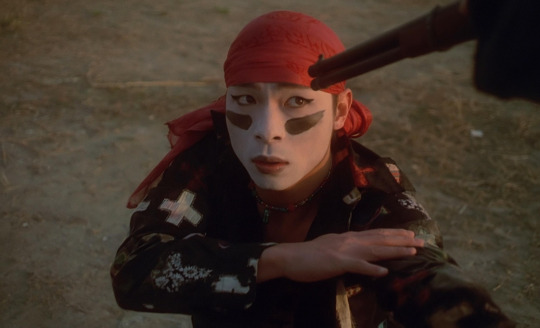
1 note
·
View note
Text
May 25 - Day Trip to Osaka
We had our first excursion to Osaka! First, we visited the Umeda Sky Building. This building was the third observatory that we have visited in the program. Unlike the other two times, this observatory was outside. I preferred this to the indoor views of the other two as it also made for much better pictures.
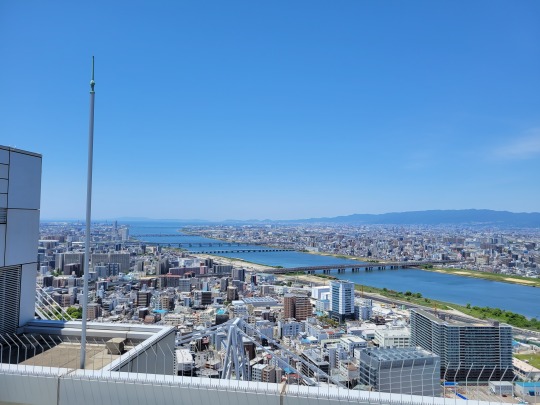
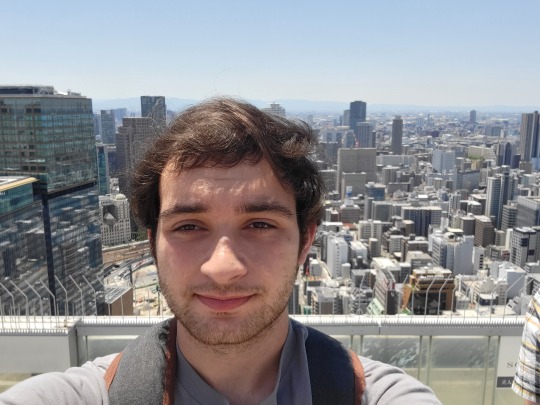
From the top of the observatory, you could see the infamous Gate Tower Building, known for having a highway that passes through the building! I will elaborate more during the academic reflection, but it was impressive to see it in person.
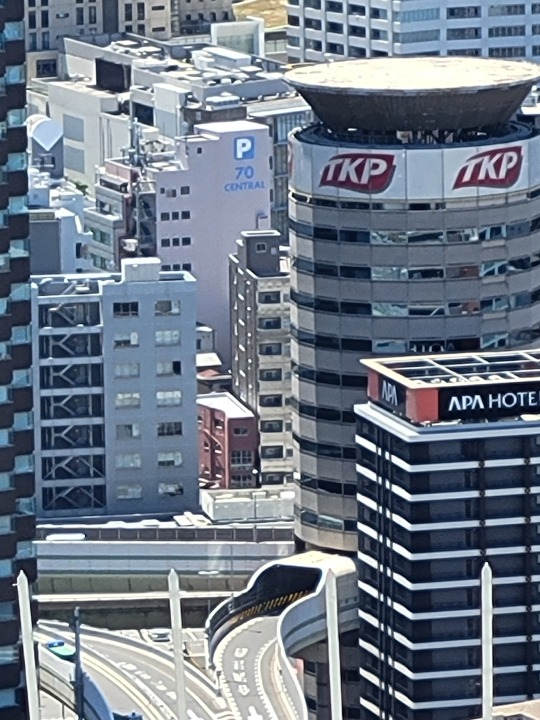
When we finished looking down at the city, it was time for lunch. Luckily, the Umeda Sky Building has a plethora of food choices. I decided to get chicken katsu with a cheese curry at CoCo Ichibanya, a chain curry restaurant. It was delicious, but I'll let the photo speak for itself.

Afterward, we embarked on Osaka Castle. While I have been once before, its exterior beauty is still impressive. Unfortunately, after remodeling the interior, it no longer feels as authentic.

Our last scheduled destination was Dotonbori. Dotonbori is sprawling with entertainment, restaurants, and small bars. Alongside the canal, you can find the infamous Glico Man, a billboard that has existed in some capacity for over half a century!

After being released from the scheduled excursion, I visited the Osaka Pokémon Center and Ghibli Store. I didn't buy anything because I wanted to save money, but it was fun browsing. I thought that the Ghibli store had some especially cute merchandise.

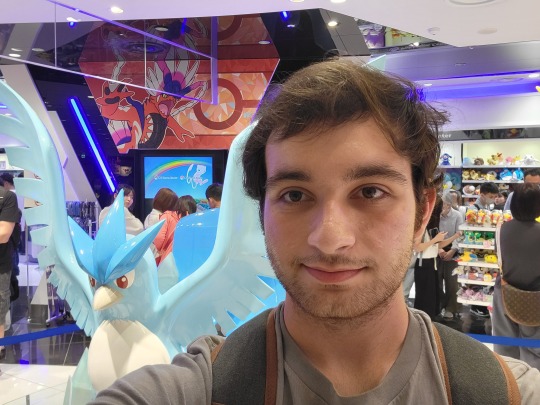


Academic Reflection
Focusing primarily on Japanese architectural differences from Western nations, I found that the content of the assigned reading was interesting. Simply flying over a Japanese city outlines many of its differences from Western cities. Previous readings have discussed how Japanese zoning restrictions are far less restrictive than their European counterparts. However, Perez adds some additional noteworthy points.
Osaka began heavy industrialization as early as the late 19th century, with the opening of the Tokaido Main Line shinkansen from Tokyo to Kobe. However, with this rapid industrialization came many problems such as housing shortages and poor living conditions, earning it the name "city of smoke." Plans drafted to alleviate these problems included the statement of a land readjustment policy. Land readjustment is similar to emanate domain in the United States, and it forces land owners to comply with public building projects. While many landowners will simply sell their land, those who know their rights may negotiate better agreements. Such is the case of the infamous Gate Tower Building, which has a highway running through the building. Rather than sell the property, the landowner removed floors 5 through 7 and offered to rent them to the local municipality!
1 note
·
View note
Text
Thursday 23rd May - Day 17
It was a late start this morning, departure time of 9.30am! After breakfast I headed out to pick up snacks for the coach journey and wandered around the old town before many people appeared. Lots of the shopkeepers were out tidying the areas around their premises and starting to get ready for the day. A great time to take photos as there were very few vehicles or people about!
Today we were heading for Osaka and our last destination on the trip. We will all fly home from here in 2 days time, ours being the first flight to leave at around 6.40am and the last of the 4 flights leaving around 11.45 pm. We had an early lunch stop where we ate a traditional Japanese meal together, our last meal of the trip where we will all be together. Then we drove on to Himeji Castle also known as White Heron Castle, due to its soaring white plaster walls. The main keep was built in 1601 and is one of the oldest surviving keeps in Japan. Because the castle has never been attacked, successfully bombed (a bomb did hit the castle but it failed to detonate) or burned the majority of the buildings have survived, although regular restoration has been going on since the early 1900’s. The only stone structures of the castle is its foundations, the buildings are made of wood, plaster and earth. The building was designed for warfare, but despite the nearly 1000 gun and arrow slots it has never been attacked. The buildings were mainly used as a centre for administration and as a residence for the Daimyo. The residence was destroyed between 1868-1912 but the use of the buildings can still be seen.
The architecture is the castle is incredible. The tile roofing style is known as Hongawarabuki, which combines flat tiles with round ones alternately. The joints between the tiles are covered in plaster and the tiles are marked with emblems representing family crests of the previous lords of the castle, currently there are 6 crests on show. The windows are designed with thick lattices to prevent the enemy, bullets and arrows from penetrating. The building has lots of Sama (loopholes), triangle shaped, circular , square an rectangle, these enabled arrows and bullets to be shot at the invaders. Gatehouses and sturdy gates protect the entrances to the castle and the shape of the castle walls meant scaling them would have been impossible.
Around 150 years ago, at the end of the samurai era, the government ordered the demolition of all castles other than those being used by the army. The castle was put up for auction and was sold for ¥23.5 which would have been ¥100,000 today and was then taken over by the army and so spared from demolition. The castle has been used by a number of film makers, most famously in ‘You only live twice’
From the castle we headed to our hotel in Osaka, the city seems to be bigger than Tokyo and it is certainly more flashy .. much more like we thought Japanese cities would be! Kas took us on a walking tour, once we had checked in, we headed towards the river and the famous Ebisu Bridge which is located in the centre of Dotonbori. It provides a view of the giant neon sign with the Glico running man, the Don Quijote Ferris Wheel and other landmarks that make the Namba area so recognisable. The area is full of eating places of all descriptions as well as lots of shops from the ¥100 stores to high end shops such as Gucci. The city was buzzing with neon light, advertising hoardings, people, flashy shops, noises and food smells, such a contrast from the city that we left this morning. We spent some time exploring and had a meal in a local restaurant before meeting up with others in the bar .. the hotel bar is extremely expensive!
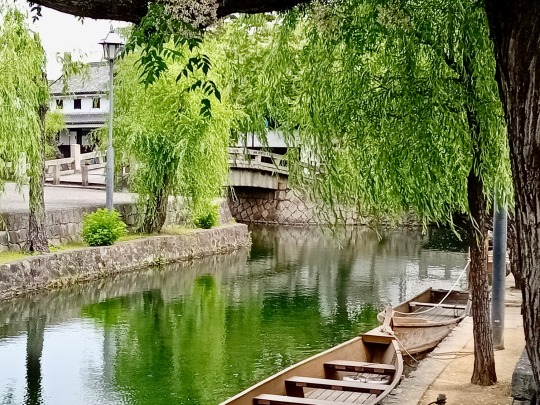


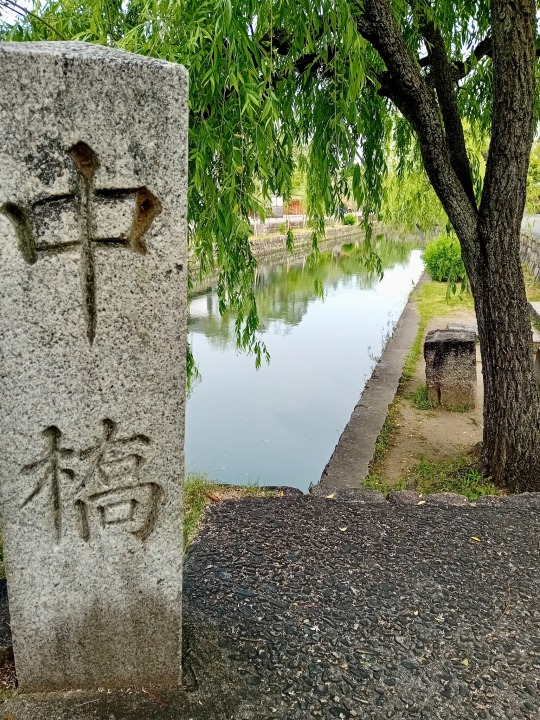
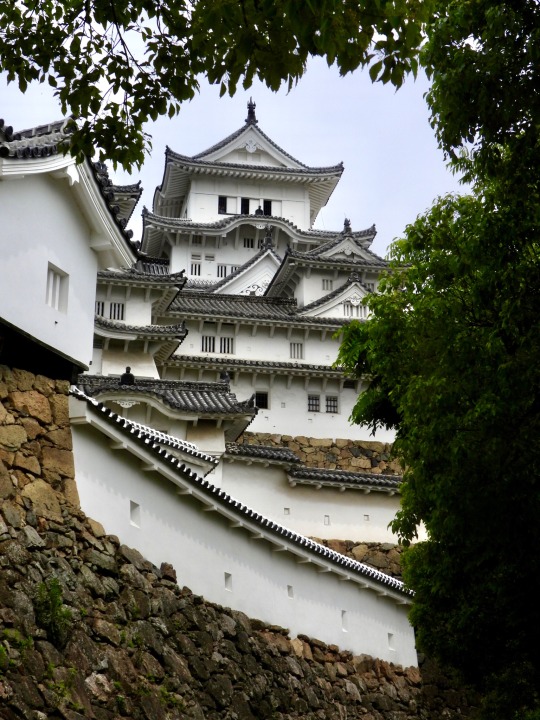
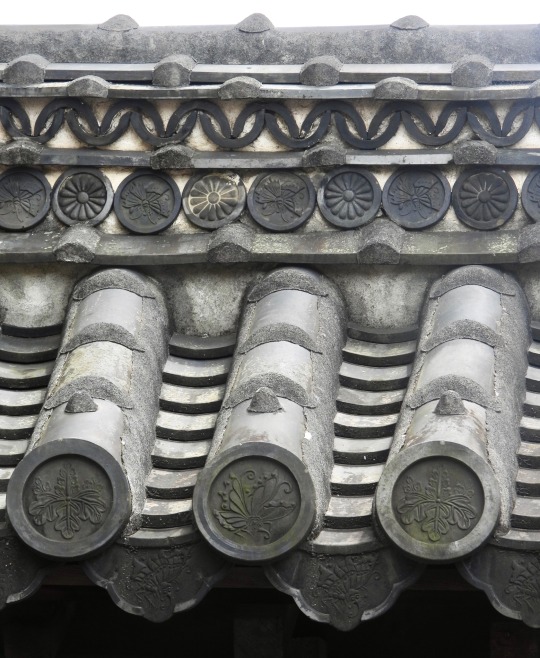




1 note
·
View note
Text
Swallowtail Butterfly
Shunji Iwai's *Swallowtail Butterfly* was definitely a roller coaster of a movie. It starts off by showing a dead body left in a field. This person turns out to be the mother of our main character, who is nameless at this point. She is then abandoned at a prostitution establishment. One of the workers there, named Glico, almost sold her to a client there, but later changed her mind. Glico then names her Ageha, which is Japanese for swallowtail. Glico now starts taking care of her and introduces her to some of her friends. The audience got to see how some of them make their living, which was honestly kind of funny. Before they are introduced, we see Fei Hong stealthily snipe and blow out the tire of an incoming vehicle. Conveniently this was done right next to his auto repair shop where he can fix the car's newly found damage. As he does these repairs, and the victim gets distracted, he siphons gas from his car as well, leading to the poor guy having to come back and buy back his gas. Another one of the characters that Ageha meets is Arrow, an ex-boxer from America. At one point while she is at Glico's establishment, a client attempts to assault her. Glico sees this and tries to stop the client, resulting in Ageha escaping and asking Arrow for help. Arrow rocks this guy so hard he flies out the window, where he is then run over by a truck. This is when the story takes a turn and they find a cassette tape in his body while they are trying to hide it. This cassette tape contains a magnetic encoding that is crucial to creating counterfeit yen that can be used to turn a 1000 yen bill into 10000 yen. With this money, those who remained started running a music club and Glico started her journey as a pop-star. In the background, what happened after the man died was that the Mob started following his trail, not failing to use violence along the way one bit. The boss of this mob turns out to be Glico's brother who actually gave her that name. It was interesting seeing his final encounter with Ageha at the end of the movie where it comes full circle and he learns that his sister did the same thing he did with Ageha. Here, she also returns the cassette tape back to him, having little idea of what was going on in the background to get that cassette tape back. This movie was a pretty enjoyable watch, all things considered.
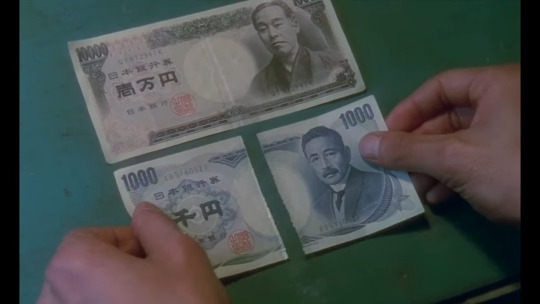
0 notes
Text
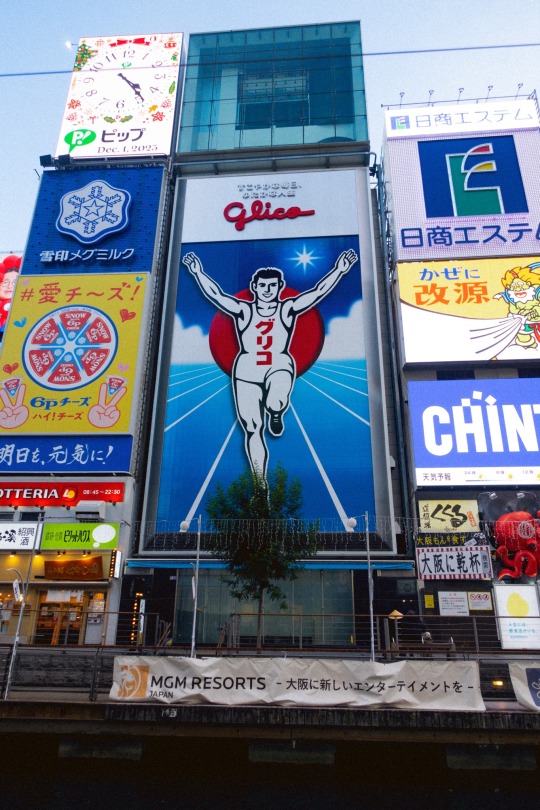
Glico Running Man. Dotonbori. Chuo Ward. Osaka, Japan.
#Glico Running Man#Glico#Neon Sign#Neon Aesthetic#Signage#Sign#Dotonbori River#Dotonbori#Chuo Ward#Osaka#Japan#Photography
3 notes
·
View notes
Text
Osaka Unveiled: Discovering the Best Activities in Japan's Culinary Capital
Osaka, Japan's second-largest city, is a vibrant metropolis known for its rich history, vibrant culture, and, above all, its mouthwatering cuisine. From sizzling street food stalls to Michelin-starred restaurants, Osaka offers a culinary adventure like no other. But beyond its gastronomic delights, this dynamic city is also home to a wealth of attractions and activities that are sure to captivate visitors of all ages and interests.
Begin your exploration of things to do osaka in the bustling district of Dotonbori, the city's epicenter of entertainment and dining. Here, you'll find a kaleidoscope of neon lights, towering billboards, and bustling crowds, all vying for your attention. Take a leisurely stroll along the Dotonbori Canal, where you can snap photos of the iconic Glico Running Man billboard and sample some of Osaka's most famous street foods, including takoyaki (octopus balls), okonomiyaki (savory pancakes), and kushikatsu (deep-fried skewers).
After satisfying your taste buds in Dotonbori, venture to Osaka Castle, one of Japan's most iconic landmarks. This majestic fortress, surrounded by expansive gardens and moats, offers a glimpse into Japan's feudal past and provides stunning views of the city skyline from its observation deck. Explore the castle's interior museum, which houses artifacts and exhibits detailing the history of the samurai and the rise of the Tokugawa shogunate.
For a more contemporary experience, head to the Umeda Sky Building, a striking architectural marvel that offers panoramic views of Osaka from its rooftop observation deck, known as the Floating Garden Observatory. Marvel at the cityscape below as you stroll across the open-air walkway, or enjoy a romantic dinner at the building's rooftop restaurant, which offers sweeping vistas of the city illuminated at night.
No visit to Osaka would be complete without indulging in a traditional Japanese tea ceremony. Head to the tranquil oasis of the Osaka Castle Park, where you can participate in a tea ceremony led by a knowledgeable tea master. Learn about the ancient rituals and customs associated with this time-honored practice as you sip on matcha (powdered green tea) and savor traditional Japanese sweets.
For a taste of Osaka's vibrant performing arts scene, catch a kabuki or bunraku (traditional puppet theater) performance at the National Bunraku Theater. Experience the mesmerizing artistry of Japan's classical theater forms as talented performers bring ancient tales to life on stage with elaborate costumes, intricate choreography, and masterful storytelling.
For a day trip outside the city, hop on a train to the historic town of Nara, home to some of Japan's most famous UNESCO World Heritage Sites. Explore the sprawling grounds of Todai-ji, the world's largest wooden building and home to a colossal bronze Buddha statue, or wander through the serene gardens of Kasuga Taisha, a stunning Shinto shrine surrounded by thousands of stone lanterns.
As night falls, Osaka truly comes alive with a vibrant nightlife scene that rivals any other city in Japan. Head to the trendy district of Kitashinchi, where you'll find an array of chic cocktail bars, stylish lounges, and upscale nightclubs. Alternatively, explore the narrow alleyways of Hozenji Yokocho, lined with cozy izakayas (Japanese pubs) and traditional teahouses, where you can enjoy a laid-back evening of food, drinks, and conversation with locals and fellow travelers alike.
0 notes
